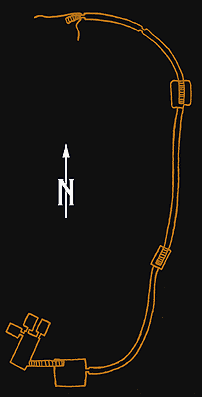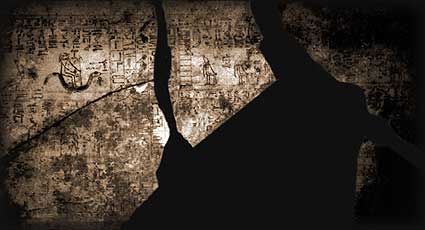 |
KV -20 , Tomb
of Tuthmosis I and Hatshepsut
Tomb description:
A mostly
undecorated tomb built by the pharaoh Hatshepsut in the Valley
of the Kings at point directly behind her impressive temple at
Deir el Bahri. It is thought that the extreme length of the tomb
was to enable her body would then lie underneath her temple -
however the curve in the tomb shows how the tomb builders came
across unsuitable rock and so the tomb had to turn away from
its intended route.
When
the sarcophagus chamber was cleared by Howard Carter in 1920,
he found two sarcophagi - one belonging to Hatshepsut and one
which belonged to her father Tuthmosis I, both empty.
|
The
only decoration of the tomb was in the burial chamber, fifteen
limestone blocks which were inscribed with texts from the Amduat:

Hatshepsut was buried
in a quartzite sarcophagus, this was in fact her second sarcophagus
- on proclaiming herself king Hatshepsut decided not to use her
original sarcophagus which was made for her while she was still
queen. Her original sarcophagus was re-carved for the burial
of her father Tuthmosis I:

Tuthmosis I was also
buried within KV20 on the death of Hatshepsut, but not for long
- Tuthmosis III was to move his mummy into KV38 and bury him
in a new sarcophagus.

carving on one
end of the sarcophagus of Tuthmosis I
|
Other objects found in the tomb:
a foundation
deposit of Hatsheput was found at the entrance to the tomb which
included fragments of funerary furniture (inscribed with the
names of Ahmose-Nefertari, Tuthmosis I, Queen Ahmose and Hatshepsut),
potsherds, fragments of faience and burnt pieces of a statue
-possibly a guardian statue.
a shabti
figure belonging to Hatshepsut in The Hague.
Some
other funerary items belonging to Hatshepsut were found in the
Royal Cache of TT320
|
|



